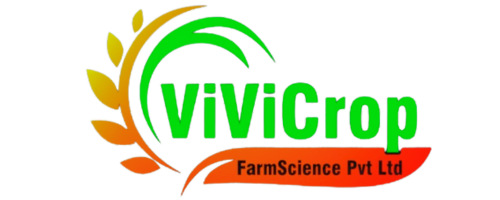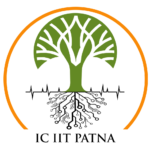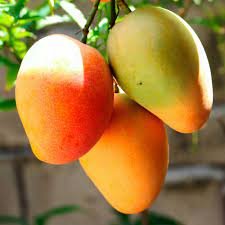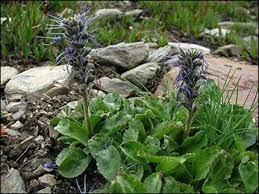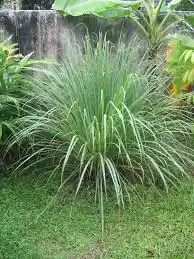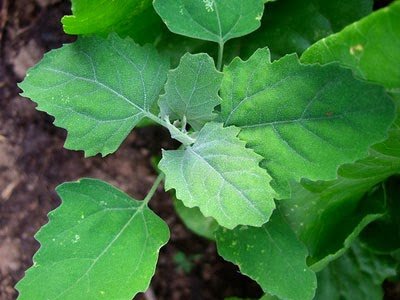Nutmeg (Myristica fragrans) Nutrition Requirements
Nutrition required by Nutmeg (Myristica fragrans) at each stage of its life cycle.
SOIL PREPARATION
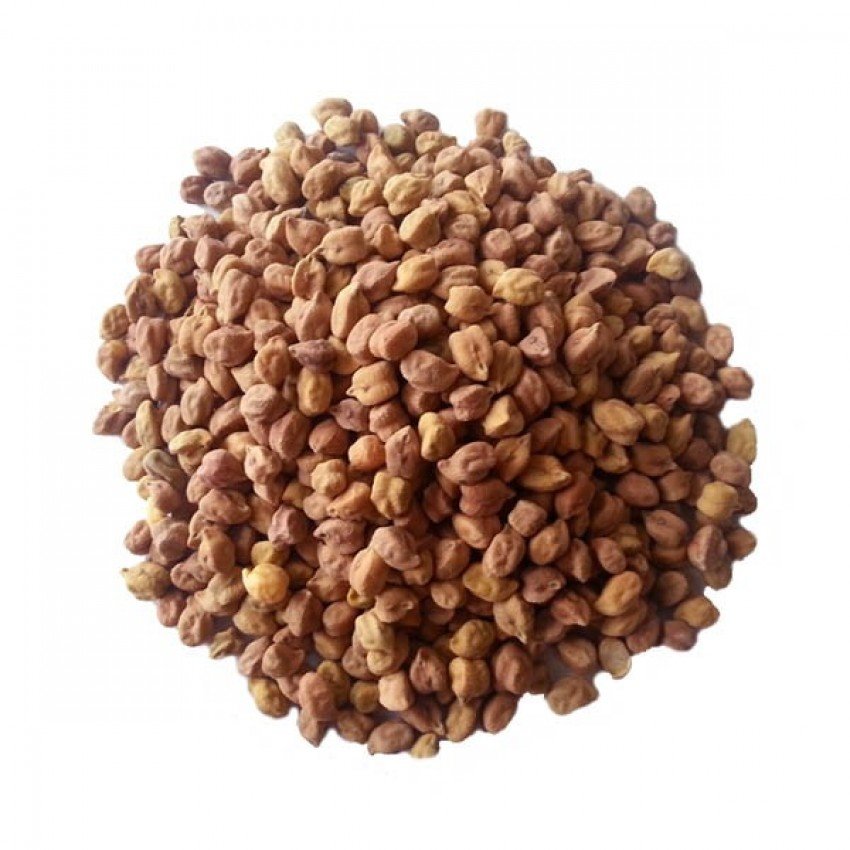
Soil Preparation
Soil preparation is a crucial stage in nutmeg cultivation to ensure optimal growth and yield.
Here's a general guideline for soil preparation and the nutrition requirements at the soil preparation stage for nutmeg (Myristica fragrans):
**Soil Preparation Method:**
1. **Site Selection:**
Choose a well-drained site with deep, fertile soil for nutmeg cultivation. Nutmeg trees thrive in loamy or sandy loam soils with a pH range of 5.5 to 7.0.
2. **Land Clearing:**
Clear the land of any existing vegetation, including weeds, bushes, and trees. Ensure thorough clearing to minimize competition for nutrients and water.
3. **Soil Testing:**
Conduct soil testing to assess the soil's nutrient levels and pH. Based on the soil test results, amend the soil as necessary to optimize nutrient availability and pH for nutmeg cultivation.
4. **Tillage:**
Till the soil to a depth of about 30 to 45 centimeters (12 to 18 inches) to loosen compacted soil and improve drainage. Avoid excessive tillage that can disrupt soil structure and lead to erosion.
5. **Organic Matter Addition:**
Incorporate organic matter such as compost, well-rotted manure, or leaf litter into the soil during tillage. Organic matter improves soil fertility, structure, and water retention capacity.
6. **Bed Preparation:**
Create raised beds or ridges for planting nutmeg trees to improve soil drainage and root aeration. Ensure proper spacing between beds to facilitate orchard management activities.
7. **Soil Moisture Management:**
Ensure adequate soil moisture during soil preparation by irrigating if necessary. Nutmeg trees require consistent soil moisture, especially during establishment.
**Nutrition Requirement:**
1. **Nitrogen (N):**
Nutmeg trees require nitrogen for vegetative growth and overall health. Incorporate nitrogen-rich organic amendments such as compost or manure during soil preparation. Additionally, consider applying nitrogen fertilizer based on soil test recommendations.
2. **Phosphorus (P):**
Phosphorus is essential for root development and flowering in nutmeg trees. Ensure adequate phosphorus levels in the soil by incorporating phosphorus-rich organic amendments or applying phosphorus fertilizer as recommended based on soil test results.
3. **Potassium (K):**
Potassium is crucial for nutmeg trees' overall growth, fruit development, and resistance to diseases. Incorporate potassium-rich organic amendments or apply potassium fertilizer according to soil test recommendations.
4. **Micronutrients:**
Ensure the availability of essential micronutrients such as zinc, iron, manganese, and copper by incorporating micronutrient-rich organic amendments or applying micronutrient fertilizers as recommended based on soil test results.
5. **pH Adjustment:**
Adjust soil pH to the optimal range of 5.5 to 7.0 for nutmeg cultivation. Lime can be added to acidic soils to raise pH, while elemental sulfur can be added to alkaline soils to lower pH.
6. **Calcium and Magnesium:**
Ensure adequate levels of calcium and magnesium in the soil, as these nutrients are essential for nutmeg tree growth and development. Incorporate calcium and magnesium sources such as dolomitic lime or gypsum if soil test results indicate deficiencies.
7. **Mulching:**
Apply organic mulch around nutmeg trees after planting to conserve soil moisture, suppress weed growth, and gradually release nutrients into the soil as the mulch decomposes.
By following these soil preparation methods and addressing the nutrition requirements, you can create an optimal growing environment for nutmeg trees, leading to healthy growth and maximum yield. Additionally, regular soil testing and monitoring are essential to adjust nutrient management practices as needed throughout the nutmeg cultivation cycle.
Early Growth (Germination to Establishment)

Early Growth
During the early growth stage (germination to establishment) of nutmeg (Myristica fragrans), the nutrition requirements are crucial to support seedling growth, root development, and establishment.
Here are the essential nutrients and their roles during this stage:
1. **Nitrogen (N):**
Nitrogen is essential for promoting vegetative growth, including leaf and stem development, during the early stages of nutmeg growth. Adequate nitrogen availability supports the vigorous growth of young seedlings.
2. **Phosphorus (P):**
Phosphorus is crucial for root development and early establishment of nutmeg seedlings. It plays a key role in energy transfer, cell division, and promoting strong root growth, which is essential for nutrient uptake and overall plant health.
3. **Potassium (K):**
Potassium is important for regulating water uptake, enhancing nutrient transport, and improving stress tolerance in nutmeg seedlings. It also contributes to overall plant vigor and disease resistance during the early growth stage.
4. **Calcium (Ca) and Magnesium (Mg):**
Calcium and magnesium are secondary macronutrients that support cell wall formation, enzyme activation, and overall plant structure. Adequate levels of calcium and magnesium are essential for healthy nutmeg seedling growth and establishment.
5. **Micronutrients (Iron, Zinc, Manganese, Copper):**
Micronutrients are essential for various physiological processes in nutmeg seedlings, including enzyme activation, photosynthesis, and overall plant metabolism. Iron, zinc, manganese, and copper are particularly important during the early growth stage to prevent micronutrient deficiencies and ensure optimal seedling growth.
**Nutrient Management Practices:**
1. **Soil Testing:**
Conduct soil tests to assess nutrient levels in the soil and identify any deficiencies or imbalances. Soil testing guides nutrient management decisions and helps determine the appropriate fertilizer application rates.
2. **Organic Matter Addition:**
Incorporate organic matter such as compost or well-rotted manure into the soil during soil preparation to improve nutrient availability and soil structure. Organic matter also contributes to long-term soil fertility and enhances nutrient retention.
3. **Fertilizer Application:**
Based on soil test results and nutrient requirements, apply a balanced fertilizer formulation with a higher proportion of nitrogen (N) and phosphorus (P) to support early seedling growth and establishment. Potassium (K) and micronutrients can be included as needed to address specific deficiencies.
4. **Foliar Nutrition:**
In addition to soil-applied fertilizers, foliar nutrition can be beneficial during the early growth stage to provide essential nutrients directly to nutmeg seedlings. Foliar sprays containing micronutrients can help address nutrient deficiencies and promote healthy growth.
5. **pH Management:**
Ensure that soil pH is within the optimal range (typically 5.5 to 7.0) for nutmeg cultivation to maximize nutrient availability to seedlings. Adjust soil pH as needed using appropriate amendments such as lime or sulfur.
By addressing these nutrition requirements and implementing proper nutrient management practices during the early growth stage, you can promote healthy nutmeg seedling growth, enhance root development, and establish a strong foundation for subsequent growth stages. Regular monitoring of nutrient levels and plant health is essential to adjust nutrient management practices as needed and ensure optimal growth and development of nutmeg plants.
Tillering Stage (Shoot Development)

Tillering Stage
During the tillering stage (shoot development) of nutmeg (Myristica fragrans), the nutrition requirements play a crucial role in supporting vegetative growth, leaf development, and overall plant vigor.
Here are the essential nutrients and their roles during this stage:
1. **Nitrogen (N):**
Nitrogen is essential for promoting vigorous shoot growth and leaf development during the tillering stage of nutmeg. Adequate nitrogen availability supports the formation of healthy foliage, which is crucial for photosynthesis and overall plant vigor.
2. **Phosphorus (P):**
Phosphorus plays a key role in energy transfer, root development, and overall plant metabolism during the tillering stage. Adequate phosphorus availability supports the development of a strong root system, which is essential for nutrient uptake and plant anchorage.
3. **Potassium (K):**
Potassium is important for regulating water uptake, enhancing nutrient transport, and improving stress tolerance in nutmeg plants during the tillering stage. Adequate potassium availability supports healthy shoot growth, improves disease resistance, and enhances overall plant vigor.
4. **Calcium (Ca) and Magnesium (Mg):**
Calcium and magnesium are secondary macronutrients that contribute to cell wall formation, enzyme activation, and overall plant structure during the tillering stage. Adequate levels of calcium and magnesium support healthy shoot development and improve plant resilience to environmental stress.
5. **Micronutrients (Iron, Zinc, Manganese, Copper):**
Micronutrients are essential for various physiological processes in nutmeg plants, including enzyme activation, photosynthesis, and overall plant metabolism during the tillering stage. Iron, zinc, manganese, and copper play critical roles in nutrient uptake, chlorophyll synthesis, and plant growth.
**Nutrient Management Practices:**
1. **Soil Testing:**
Conduct soil tests to assess nutrient levels in the soil and identify any deficiencies or imbalances. Soil testing guides nutrient management decisions and helps determine the appropriate fertilizer application rates.
2. **Fertilizer Application:**
Based on soil test results and nutrient requirements, apply a balanced fertilizer formulation with a higher proportion of nitrogen (N) to support vigorous shoot growth and leaf development during the tillering stage. Phosphorus (P), potassium (K), and micronutrients can be included as needed to address specific deficiencies.
3. **Organic Matter Addition:**
Incorporate organic matter such as compost or well-rotted manure into the soil during soil preparation to improve nutrient availability and soil structure. Organic matter also contributes to long-term soil fertility and enhances nutrient retention.
4. **Foliar Nutrition:**
In addition to soil-applied fertilizers, foliar nutrition can be beneficial during the tillering stage to provide essential nutrients directly to nutmeg plants. Foliar sprays containing micronutrients can help address nutrient deficiencies and promote healthy shoot development.
5. **pH Management:**
Ensure that soil pH is within the optimal range (typically 5.5 to 7.0) for nutmeg cultivation to maximize nutrient availability to plants. Adjust soil pH as needed using appropriate amendments such as lime or sulfur.
By addressing these nutrition requirements and implementing proper nutrient management practices during the tillering stage, you can promote healthy shoot development, enhance leaf growth, and establish a strong foundation for subsequent growth stages in nutmeg plants. Regular monitoring of nutrient levels and plant health is essential to adjust nutrient management practices as needed and ensure optimal growth and development.
Flowering

Flowering
During the flowering stage of nutmeg (Myristica fragrans) plants, proper nutrition is essential to support flower formation, pollination, and subsequent fruit development.
Here are the essential nutrients and their roles during the flowering stage of nutmeg plants:
1. **Phosphorus (P):**
Phosphorus is crucial for promoting flower formation and reproductive development in nutmeg plants. Adequate phosphorus availability during the flowering stage supports healthy flower initiation and pollination, leading to improved fruit set and development.
2. **Potassium (K):**
Potassium plays a key role in flower and fruit development, as well as in improving plant stress tolerance during the flowering stage. Adequate potassium availability supports optimal flower and fruit size, enhances fruit quality, and improves overall plant vigor.
3. **Calcium (Ca) and Magnesium (Mg):**
Calcium and magnesium are important for flower and fruit development, as well as for maintaining proper cell membrane integrity and enzyme activation during the flowering stage. Adequate levels of calcium and magnesium support healthy flower formation, pollination, and fruit set in nutmeg plants.
4. **Boron (B):**
Boron is essential for flower formation, pollen germination, and fruit set in nutmeg plants. Adequate boron availability during the flowering stage promotes proper flower development, enhances pollen tube growth, and improves fruit set and retention.
5. **Micronutrients (Zinc, Manganese, Copper):**
Micronutrients such as zinc, manganese, and copper play important roles in flower and fruit development, enzyme activation, and overall plant metabolism during the flowering stage. Adequate levels of these micronutrients support healthy flower formation, pollination, and fruit set in nutmeg plants.
**Nutrient Management Practices:**
1. **Fertilizer Application:**
Apply a balanced fertilizer formulation with a higher proportion of phosphorus (P) and potassium (K) to support flower and fruit development during the flowering stage of nutmeg plants. Phosphorus promotes flower formation and reproductive development, while potassium enhances fruit quality and overall plant vigor.
2. **Foliar Nutrition:**
Implement foliar nutrition practices during the flowering stage to provide essential nutrients directly to nutmeg plants. Foliar sprays containing phosphorus, potassium, calcium, magnesium, boron, and micronutrients can help support flower and fruit development, improve pollination, and enhance fruit set and retention.
3. **Soil pH Management:**
Ensure that soil pH is within the optimal range (typically 5.5 to 7.0) for nutmeg cultivation to maximize nutrient availability to plants during the flowering stage. Adjust soil pH as needed using appropriate amendments such as lime or sulfur.
4. **Water Management:**
Maintain adequate soil moisture levels during the flowering stage to support flower and fruit development in nutmeg plants. Proper irrigation practices ensure optimal nutrient uptake and utilization by plants during this critical growth stage.
By addressing these nutrition requirements and implementing proper nutrient management practices during the flowering stage, you can promote healthy flower formation, improve pollination, and enhance fruit set and development in nutmeg plants, ultimately leading to higher yields and quality. Regular monitoring of nutrient levels and plant health is essential to adjust nutrient management practices as needed and ensure optimal flowering and fruiting in nutmeg plants.
Matchuration & Ripening

Matchuration & Ripening
During the maturation and ripening stage of nutmeg (Myristica fragrans), proper nutrition is essential to support fruit development, ripening, and quality.
Here are the essential nutrients and their roles during the maturation and ripening stage of nutmeg:
1. **Potassium (K):**
Potassium plays a crucial role in fruit development, ripening, and quality during the maturation stage of nutmeg. Adequate potassium availability promotes fruit enlargement, enhances fruit firmness, and improves overall fruit quality and flavor.
2. **Phosphorus (P):**
Phosphorus is important for supporting fruit maturation and ripening processes in nutmeg plants. Adequate phosphorus availability during the maturation stage enhances fruit development, improves fruit coloration, and supports sugar accumulation in the fruit.
3. **Calcium (Ca) and Magnesium (Mg):**
Calcium and magnesium are essential for maintaining fruit quality, preventing fruit disorders, and enhancing post-harvest shelf life during the maturation and ripening stage of nutmeg. Adequate levels of calcium and magnesium support proper fruit cell wall structure, reduce fruit decay, and improve fruit firmness.
4. **Boron (B):**
Boron is essential for fruit development and quality during the maturation and ripening stage of nutmeg. Adequate boron availability promotes fruit enlargement, enhances fruit flavor and aroma, and improves overall fruit quality.
5. **Micronutrients (Zinc, Manganese, Copper):**
Micronutrients such as zinc, manganese, and copper play important roles in fruit development, enzyme activation, and overall plant metabolism during the maturation and ripening stage of nutmeg. Adequate levels of these micronutrients support proper fruit maturation, coloration, and quality.
**Nutrient Management Practices:**
1. **Fertilizer Application:**
Apply a balanced fertilizer formulation with a higher proportion of potassium (K) to support fruit maturation, ripening, and quality during the maturation and ripening stage of nutmeg. Potassium promotes fruit enlargement, enhances fruit flavor, and improves overall fruit quality.
2. **Foliar Nutrition:**
Implement foliar nutrition practices during the maturation and ripening stage to provide essential nutrients directly to nutmeg plants. Foliar sprays containing potassium, phosphorus, calcium, magnesium, boron, and micronutrients can help support fruit development, ripening, and quality.
3. **Water Management:**
Maintain adequate soil moisture levels during the maturation and ripening stage to support fruit development and quality in nutmeg plants. Proper irrigation practices ensure optimal nutrient uptake and utilization by plants during this critical growth stage.
4. **Post-harvest Nutrition:**
After harvest, ensure proper post-harvest nutrition management to maintain fruit quality and shelf life. Adequate calcium supplementation through post-harvest treatments can help reduce fruit decay and improve post-harvest shelf life.
By addressing these nutrition requirements and implementing proper nutrient management practices during the maturation and ripening stage, you can promote healthy fruit development, enhance fruit quality, and improve overall yield and marketability of nutmeg. Regular monitoring of nutrient levels and plant health is essential to adjust nutrient management practices as needed and ensure optimal fruit maturation and ripening.
Harvesting

Harvesting
During the harvesting stage of nutmeg (Myristica fragrans), there are no specific nutrition requirements as the plant is primarily harvested for its seeds rather than its foliage. However, proper harvesting techniques and post-harvest processing are essential to ensure high-quality nutmeg seeds.
Here's a guide to the nutrition requirement and procedure to be followed at the harvesting stage for nutmeg:
1. **Timing of Harvesting:**
- Nutmeg fruits are harvested when they reach maturity and start to split open on the tree. The ripe fruits should be harvested promptly to prevent seed loss and maintain seed quality.
2. **Harvesting Method:**
- Nutmeg fruits are harvested by hand-picking or using long-handled harvesting tools to carefully remove them from the tree.
- It's essential to handle the fruits gently to avoid damaging the seeds inside.
3. **Processing Nutmeg Seeds:**
- After harvesting, the outer fleshy husk of the nutmeg fruit is removed to reveal the inner seed or nut.
- The seeds are then washed and cleaned to remove any remaining husk or debris.
4. **Drying Nutmeg Seeds:**
- Once cleaned, nutmeg seeds are dried in the sun or in a well-ventilated area until they are hard and brittle.
- Proper drying helps preserve the seeds and prevent mold or fungal growth.
5. **Cracking Nutmeg Seeds:**
- Dried nutmeg seeds are cracked open to separate the outer shell (mace) from the inner seed (nutmeg).
- This can be done manually using a hammer or mechanically using nutmeg cracking machines.
6. **Separating Mace and Nutmeg:**
- After cracking, the outer shell (mace) is separated from the inner seed (nutmeg).
- The separated mace and nutmeg are then cleaned and sorted based on quality.
7. **Storage:**
- The cleaned and sorted nutmeg seeds are stored in airtight containers in a cool, dry place away from sunlight.
- Properly stored nutmeg seeds can retain their quality for an extended period.
8. **Post-Harvest Management:**
- After harvesting and processing, it's essential to clean the harvesting tools and processing equipment to prevent the spread of pests and diseases.
- Proper sanitation practices should be followed to maintain the overall hygiene of the harvesting and processing area.
By following these procedures during the harvesting stage, you can ensure a successful nutmeg harvest with high-quality seeds suitable for culinary and medicinal use.
Nutmeg (Myristica fragrans) Farming Economics
Get details of Profitability and cost estimate in growing Nutmeg (Myristica fragrans) per acres of Land.
SOIL PREPARATION

Soil Preparation
Early Growth (Germination to Establishment)

Early Growth
Tillering Stage (Shoot Development)

Tillering Stage
Flowering

Flowering
Matchuration & Ripening

Matchuration & Ripening
Harvesting

Harvesting
Nutmeg (Myristica fragrans) Disease Details
Nutrition required by Nutmeg (Myristica fragrans) at each stage of its life cycle.
SOIL PREPARATION

Soil Preparation
During the soil preparation stage for nutmeg cultivation, several diseases and pests can pose challenges.
Here are some common diseases and pests that can occur at the soil preparation stage, along with precautions to prevent them:
1. **Soilborne Pathogens:**
- **Phytophthora spp.:**
This soilborne pathogen causes root rot and can affect nutmeg seedlings during the soil preparation stage. It thrives in wet, poorly drained soils.
- **Fusarium spp.:**
Fusarium species can cause damping-off, root rot, and wilt diseases in nutmeg seedlings.
**Precautions:**
- Ensure proper soil drainage by incorporating organic matter and improving soil structure.
- Practice crop rotation to reduce the buildup of soilborne pathogens.
- Avoid overwatering and manage irrigation to prevent waterlogging.
2. **Weeds:**
- Weeds compete with nutmeg seedlings for nutrients, water, and sunlight, affecting their growth and establishment during the soil preparation stage.
**Precautions:**
- Implement effective weed control measures such as manual removal, mulching, or pre-emergent herbicide application.
- Ensure thorough land preparation and weed removal before planting nutmeg seedlings.
3. **Soil Pests:**
- Soil pests such as nematodes and soil-dwelling insects can damage nutmeg roots and seedlings, affecting their establishment and growth.
**Precautions:**
- Conduct soil tests to assess nematode populations and identify potential pest problems.
- Implement soil solarization or fumigation to reduce soil pest populations before planting nutmeg seedlings.
- Use resistant rootstocks or nematode-resistant varieties if available.
4. **Soil pH Imbalance:**
- Nutmeg plants prefer slightly acidic to neutral soil pH (pH 6.0-7.0). Soil pH imbalance can affect nutrient availability and plant growth during the soil preparation stage.
**Precautions:**
- Conduct soil pH testing and adjust soil pH if necessary using appropriate soil amendments such as lime or sulfur.
- Maintain optimal soil pH levels to ensure proper nutrient uptake and plant growth.
5. **Soil Nutrient Deficiencies:**
- Nutmeg seedlings may suffer from nutrient deficiencies if the soil lacks essential nutrients required for plant growth.
**Precautions:**
- Conduct soil tests to assess nutrient levels and address any deficiencies by incorporating appropriate fertilizers or soil amendments.
- Provide balanced nutrition to nutmeg seedlings during the soil preparation stage to support healthy growth and establishment.
By implementing these precautions and proactive measures during the soil preparation stage, growers can effectively manage diseases and pests, ensuring healthy nutmeg seedling establishment and successful crop development. Regular monitoring of soil health, nutrient levels, and plant growth is essential for early detection and management of potential issues.
Early Growth (Germination to Establishment)

Early Growing
During the early growth stage (germination to establishment) of nutmeg (Myristica fragrans) plants, several diseases and pests can pose challenges to seedlings.
Here are some common diseases and pests that can occur during this stage, along with precautions to prevent them:
1. **Damping-off:**
- Damping-off is a fungal disease caused by various pathogens such as Pythium, Rhizoctonia, and Fusarium. It affects seedlings during germination and early growth stages, causing them to rot at the base of the stem and eventually collapse.
**Precautions:**
- Use sterilized soil or growing media to sow nutmeg seeds.
- Avoid overwatering and maintain proper soil drainage to prevent waterlogging.
- Provide good air circulation around seedlings to reduce humidity levels.
- Use fungicide-treated seeds or soil drenches to protect seedlings from fungal pathogens.
2. **Seedling Blight:**
- Seedling blight is caused by various fungal pathogens and affects young nutmeg seedlings, leading to stunted growth, yellowing of leaves, and eventual death of seedlings.
**Precautions:**
- Start with healthy, disease-free seeds from reputable sources.
- Ensure proper sanitation practices to prevent the spread of fungal pathogens.
- Provide adequate spacing between seedlings to improve air circulation and reduce humidity levels.
- Apply fungicides preventatively according to label instructions.
3. **Nematodes:**
- Nematodes are microscopic roundworms that can infect nutmeg roots, causing root damage, stunted growth, and nutrient deficiencies in young seedlings.
**Precautions:**
- Conduct soil tests to assess nematode populations and identify potential pest problems.
- Implement soil solarization or fumigation to reduce nematode populations before planting nutmeg seedlings.
- Use resistant rootstocks or nematode-resistant varieties if available.
4. **Insect Pests:**
- Insect pests such as aphids, thrips, and mites can feed on nutmeg seedlings, causing damage to leaves, stems, and roots.
**Precautions:**
- Monitor seedlings regularly for signs of insect infestation.
- Use insecticidal soaps, oils, or botanical insecticides to control insect pests.
- Introduce natural predators such as ladybugs or predatory mites to manage pest populations.
5. **Environmental Stress:**
- Environmental factors such as temperature extremes, drought, or excessive sunlight can stress young nutmeg seedlings, making them more susceptible to diseases and pests.
**Precautions:**
- Provide adequate shading for young seedlings to protect them from excessive sunlight.
- Maintain proper irrigation to prevent drought stress.
- Monitor environmental conditions and provide appropriate care to minimize stress on seedlings.
By implementing these precautions and proactive measures during the early growth stage, growers can effectively manage diseases and pests, ensuring healthy nutmeg seedling establishment and successful crop development. Regular monitoring of seedlings and timely interventions are essential for early detection and management of potential issues.
Tillering Stage (Shoot Development)

Tillering Stage
During the tillering stage (shoot development) of nutmeg (Myristica fragrans) plants, several diseases and pests can pose challenges to the healthy growth of the crop.
Here are some common diseases and pests that can occur during this stage, along with precautions to prevent them:
1. **Leaf Spot Diseases:**
- Leaf spot diseases, caused by fungal pathogens such as Colletotrichum spp. and Alternaria spp., can affect the foliage of nutmeg plants during the tillering stage, leading to the development of small, dark lesions on leaves.
**Precautions:**
- Practice good sanitation by removing and destroying infected plant debris.
- Ensure proper spacing between plants to improve air circulation and reduce humidity levels, which can help prevent fungal diseases.
- Apply fungicides preventatively according to label instructions, especially during periods of high humidity or rainfall.
2. **Powdery Mildew:**
- Powdery mildew is a fungal disease caused by various species of the genus Podosphaera. It appears as a white, powdery growth on the leaves, stems, and buds of nutmeg plants during the tillering stage.
**Precautions:**
- Maintain proper spacing between plants to improve air circulation and reduce humidity levels.
- Avoid overhead irrigation, as powdery mildew thrives in humid conditions.
- Apply fungicides preventatively or as soon as symptoms appear, following label instructions carefully.
3. **Anthracnose:**
- Anthracnose, caused by fungal pathogens such as Colletotrichum spp., can affect nutmeg plants during the tillering stage, leading to the development of dark, sunken lesions on leaves, stems, and fruits.
**Precautions:**
- Practice good sanitation by removing and destroying infected plant debris.
- Ensure proper spacing between plants to improve air circulation and reduce humidity levels.
- Apply fungicides preventatively according to label instructions, especially during periods of warm, humid weather.
4. **Shoot Borers:**
- Shoot borers, including beetles and moth larvae, can bore into the stems and shoots of nutmeg plants during the tillering stage, causing damage and weakening the plants.
**Precautions:**
- Monitor plants regularly for signs of shoot borer infestation, such as wilting or holes in stems and shoots.
- Remove and destroy infested plant parts to prevent further spread of the pests.
- Use insecticides or biological control agents to manage shoot borer populations, following label instructions carefully.
5. **Root Knot Nematodes:**
- Root knot nematodes (Meloidogyne spp.) can infest the roots of nutmeg plants during the tillering stage, causing root damage, stunted growth, and nutrient deficiencies.
**Precautions:**
- Conduct soil tests to assess nematode populations and identify potential pest problems.
- Implement soil solarization or fumigation to reduce nematode populations before planting nutmeg seedlings.
- Use resistant rootstocks or nematode-resistant varieties if available.
By implementing these precautions and proactive measures during the tillering stage, growers can effectively manage diseases and pests, ensuring healthy nutmeg plant development and successful crop production. Regular monitoring of plants and timely interventions are essential for early detection and management of potential issues.
Flowering

Flowering
During the flowering stage of nutmeg (Myristica fragrans) plants, several diseases and pests can affect the crop.
Here are some common diseases and pests that can occur during this stage, along with precautions to prevent them:
1. **Blossom Blight:**
- Blossom blight, caused by fungal pathogens such as Colletotrichum spp. and Botrytis spp., can affect nutmeg flowers, causing browning, wilting, and premature dropping of blossoms.
**Precautions:**
- Practice good sanitation by removing and destroying infected flowers and plant debris.
- Ensure proper spacing between plants to improve air circulation and reduce humidity levels.
- Apply fungicides preventatively according to label instructions, especially during periods of high humidity or rainfall.
2. **Fruit Rot:**
- Fruit rot diseases, caused by fungal pathogens such as Phytophthora spp. and Colletotrichum spp., can affect nutmeg fruits during the flowering stage, leading to the development of soft, rotten spots on the surface of the fruit.
**Precautions:**
- Ensure proper spacing between plants to improve air circulation and reduce humidity levels.
- Avoid overhead irrigation, as wet conditions can promote the development of fruit rot diseases.
- Apply fungicides preventatively or as soon as symptoms appear, following label instructions carefully.
3. **Aphids:**
- Aphids are sap-sucking insects that can infest nutmeg flowers during the flowering stage, causing distortion of flower buds, stunted growth, and the transmission of viral diseases.
**Precautions:**
- Monitor plants regularly for signs of aphid infestation, such as curled or distorted flower buds.
- Use insecticidal soaps, oils, or botanical insecticides to control aphid populations.
- Introduce natural predators such as ladybugs or lacewings to manage aphid populations.
4. **Thrips:**
- Thrips are tiny, slender insects that feed on nutmeg flowers during the flowering stage, causing damage to flower buds and petals.
**Precautions:**
- Monitor plants regularly for signs of thrips infestation, such as silvery streaks or scars on flower buds and petals.
- Use insecticidal soaps, oils, or botanical insecticides to control thrips populations.
- Introduce natural predators such as predatory mites or minute pirate bugs to manage thrips populations.
5. **Fruit Fly:**
- Fruit flies, such as the Oriental fruit fly (Bactrocera dorsalis), can infest nutmeg fruits during the flowering stage, leading to the development of larvae inside the fruit, causing damage and reducing fruit quality.
**Precautions:**
- Implement fruit fly management practices such as trapping, sanitation, and the use of insecticidal baits.
- Harvest fruits promptly and dispose of infested fruits to prevent the spread of fruit fly infestations.
- Use insecticides or biological control agents to manage fruit fly populations, following label instructions carefully.
By implementing these precautions and proactive measures during the flowering stage, growers can effectively manage diseases and pests, ensuring healthy nutmeg flower development and successful fruit set. Regular monitoring of plants and timely interventions are essential for early detection and management of potential issues.
Matchuration & Ripening

Matchuration & Ripening
During the maturation and ripening stage of nutmeg (Myristica fragrans) fruits, several diseases and pests can affect the crop.
Here are some common diseases and pests that can occur during this stage, along with precautions to prevent them:
1. **Fruit Rot:**
- Fruit rot diseases, caused by fungal pathogens such as Phytophthora spp. and Colletotrichum spp., can affect nutmeg fruits during the maturation and ripening stage, leading to the development of soft, rotten spots on the surface of the fruit.
**Precautions:**
- Harvest fruits promptly when they reach maturity to minimize the risk of fruit rot.
- Handle harvested fruits carefully to avoid bruising or damaging the fruit, which can provide entry points for fungal pathogens.
- Store harvested fruits in a cool, dry environment to reduce humidity levels and minimize the risk of fruit rot development.
2. **Anthracnose:**
- Anthracnose, caused by fungal pathogens such as Colletotrichum spp., can affect nutmeg fruits during the maturation and ripening stage, leading to the development of dark, sunken lesions on the surface of the fruit.
**Precautions:**
- Practice good sanitation by removing and destroying infected fruits and plant debris.
- Avoid overcrowding and provide proper spacing between fruits during storage to improve air circulation and reduce humidity levels.
- Apply fungicides preventatively or as soon as symptoms appear, following label instructions carefully.
3. **Fruit Fly:**
- Fruit flies, such as the Oriental fruit fly (Bactrocera dorsalis), can infest maturing and ripening nutmeg fruits, leading to the development of larvae inside the fruit, causing damage and reducing fruit quality.
**Precautions:**
- Implement fruit fly management practices such as trapping, sanitation, and the use of insecticidal baits.
- Harvest fruits promptly and dispose of infested fruits to prevent the spread of fruit fly infestations.
- Use insecticides or biological control agents to manage fruit fly populations, following label instructions carefully.
4. **Bird Damage:**
- Birds can peck at maturing and ripening nutmeg fruits, causing physical damage and reducing fruit quality.
**Precautions:**
- Install bird netting or use scare devices to deter birds from accessing nutmeg trees and fruits.
- Harvest fruits promptly and protect them from bird damage during storage and transportation.
5. **Post-harvest Diseases:**
- Post-harvest diseases such as storage rots and decay can affect nutmeg fruits during storage and transportation after harvesting.
**Precautions:**
- Ensure proper sanitation and hygiene practices during fruit handling, storage, and transportation to minimize the risk of post-harvest diseases.
- Store harvested fruits in a cool, dry environment with adequate ventilation to reduce humidity levels and minimize the risk of fungal growth.
By implementing these precautions and proactive measures during the maturation and ripening stage, growers can effectively manage diseases and pests, ensuring high-quality nutmeg fruits and minimizing post-harvest losses. Regular monitoring of fruits and timely interventions are essential for early detection and management of potential issues.
Harvesting

Harvesting
During the harvesting stage of nutmeg (Myristica fragrans), several diseases and pests can affect the crop.
Here are some common issues that can occur, along with precautions to prevent them:
1. **Fruit Rot:**
- Fruit rot diseases, caused by fungal pathogens such as Phytophthora spp. and Colletotrichum spp., can affect nutmeg fruits during harvesting, especially if they have been damaged during the picking process.
**Precautions:**
- Harvest fruits carefully to minimize bruising and damage, which can provide entry points for fungal pathogens.
- Use sharp and sanitized harvesting tools to reduce the risk of introducing pathogens to the fruits.
- Avoid harvesting fruits that show signs of rot or disease, and promptly remove any infected fruits from the harvest.
2. **Insect Infestation:**
- Insects such as fruit flies and beetles may infest nutmeg fruits during harvesting, leading to damage and reduced fruit quality.
**Precautions:**
- Use insect traps or repellents to deter insects from the harvested fruits.
- Inspect harvested fruits carefully for signs of insect infestation, and promptly remove any affected fruits from the harvest.
- Store harvested fruits in a cool, dry environment to discourage insect activity.
3. **Physical Damage:**
- Nutmeg fruits can be easily damaged during harvesting if not handled properly, leading to bruising and other physical injuries.
**Precautions:**
- Harvest fruits carefully and handle them gently to minimize physical damage.
- Use appropriate harvesting tools and techniques to avoid unnecessary pressure on the fruits.
- Sort harvested fruits immediately to remove any damaged or bruised ones from the batch.
4. **Post-harvest Diseases:**
- Post-harvest diseases such as storage rots and decay can develop if harvested fruits are not properly handled and stored.
**Precautions:**
- Clean and sanitize harvesting containers and equipment to prevent the spread of pathogens.
- Store harvested fruits in a well-ventilated area with controlled humidity to reduce the risk of fungal growth.
- Inspect stored fruits regularly for signs of rot or disease, and promptly remove any affected fruits to prevent the spread of infection.
By following these precautions during the harvesting stage, growers can minimize the risk of diseases and pests affecting their nutmeg crop, ensuring a higher-quality harvest and reducing post-harvest losses. Regular monitoring and proper handling practices are essential for successful harvesting and storage of nutmeg fruits.
